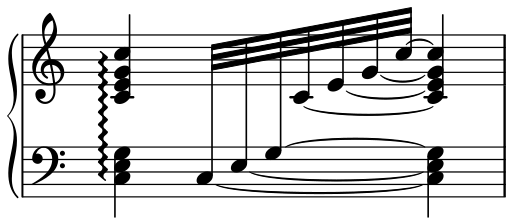Our long-awaited “River Flows in You” piano tutorial is finally here!
If you’re a piano player of either the pop or classical bent, you’ve probably heard this song. It’s famous for a reason — it’s SO beautiful! And learning how to play it will knock the socks off your family and friends. It’s pretty and impressive!
Now, “River Flows in You” can get challenging. So, we’ve broken it down into little sections over a 20-minute tutorial. For the best fingering suggestions, follow along with our video. The hand independence required for this song can get tricky, so START SLOW. It’s okay to use your ears instead of exact counting. Whichever works for you.
Table of Contents:
Love our video tutorial? Your favorite song might be next! Subscribe to our newsletter for piano news, exclusive interviews, new tutorials, interesting articles, and more delivered to your inbox every week.
To download the full sheet music for this song, sign up as a Pianote+ Member. Not a Member yet? No worries! Here’s a free trial just for you 🙂
This song has three sharps. So, warming up with your A major and F-sharp minor scales before you play will help.
The intro gently ushers in the main theme of the song.
The right hand simply rocks between a few select notes. Meanwhile, the left hand outlines the F#m and D2 chords. What’s a D2 chord? It’s a D chord (D-F#-A) with an added second note from the root (+E).
Playing slow here is okay. This song builds. Like a flowing river, it’s a journey 🙂
(Later, I’ll talk about adding some drama with rubato and dynamics.)
The main theme of “River Flows in You” sounds complicated, but as you’ll see in our piano tutorial, it’s actually pretty similar to the intro. The biggest difference is the rhythm. And once you get familiar with this rhythm pattern, it shows up throughout the song.
To help make sense of the main theme, you can break up the counting into “1 e and a 2 e and a…” with each syllable worth one sixteenth note.
1 e and a 2 e and a 3 e and a 4 e and a
Each syllable = 1 sixteenth note
Remember to hold the notes that are tied. Counting out loud can help with this.
However! Not everyone thrives off this counting method. To be honest, I learned this rhythm by listening to the music and playing what I hear. If this method works better for you, by all means, use it!
If writing in the counting works better for you, use that! Celebrate your strengths 🙂
I call this next section the “bedazzled” one because we start introducing more flourishes into the main theme, such as grace notes and extra “frill” notes.
Here are some tips!
In this section, you’ll need to tuck your thumb under right after the grace note.
And when it comes to those running sixteenth notes, stay loose, don’t tense up, and pay attention to the tucks and crossovers. Tucking under and crossing over at the right time will set your hand up for your next move without running out of fingers.
Now, when it comes to 32nd notes, don’t freak out! I know all those lines (beams) look scary. But I suggest not even counting them. Rather, just think “fast”! You can also think of two 32nd notes as fitting into the space of one 16th note.

From here, there are many repeats of similar things we’ve been doing. With some extra bling thrown in.

Love classical music but not sure where to start? Head over to Classical Piano Quick Start, four free lessons designed for beginners taught by Victoria Theodore. Victoria is a classically trained pianist with degrees from Oberlin College and Stanford University, and has played with Beyoncé and Stevie Wonder. Start your classical journey with Victoria today!
Finally, we’ve come to the ending! Here are some new symbols you may catch in this section. They’re not hard, just extra things to look out for:


Remember: this song is all about emotion. Explore dynamics and rubato. Think of where you can push and pull emotion and don’t worry so much about being precise with tempo. Let the emotions floooow through you…like a river!
I want to be honest with you: I practiced for a while before I felt I was ready to perform and teach this song.
It’s not an easy song, and beginners may struggle, but believe me: the challenge is worth it!

That being said, if you need some extra support, consider becoming a Pianote member. As a member, you can use our practice-along feature that lets you play along with the sections of the song at your own pace.
If you’re not sure whether you want to become a member yet, check us out behind the scenes.
Finally, it’s worth repeating: START SLOW. Be gentle with yourself, accept that you’ll make mistakes, and pick a learning method that aligns with your strengths. Most of all, have fun playing!
As a Pianote+ Member, you’ll get access to our 10-step Method, 1000+ song library, real teachers, world-class Coaches, and a growing community of piano players just like you.
Lisa Witt has been teaching piano for more than 20 years and in that time has helped hundreds of students learn to play the songs they love. Lisa received classical piano training through the Royal Conservatory of Music, but she has since embraced popular music and playing by ear in order to accompany herself and others. Learn more about Lisa.
/marketing/pianote/promos/april/banner-bg-m.webp)
We use cookies for traffic data and advertising. Cookie Policy »
/marketing/pianote/promos/april/banner-title.webp)